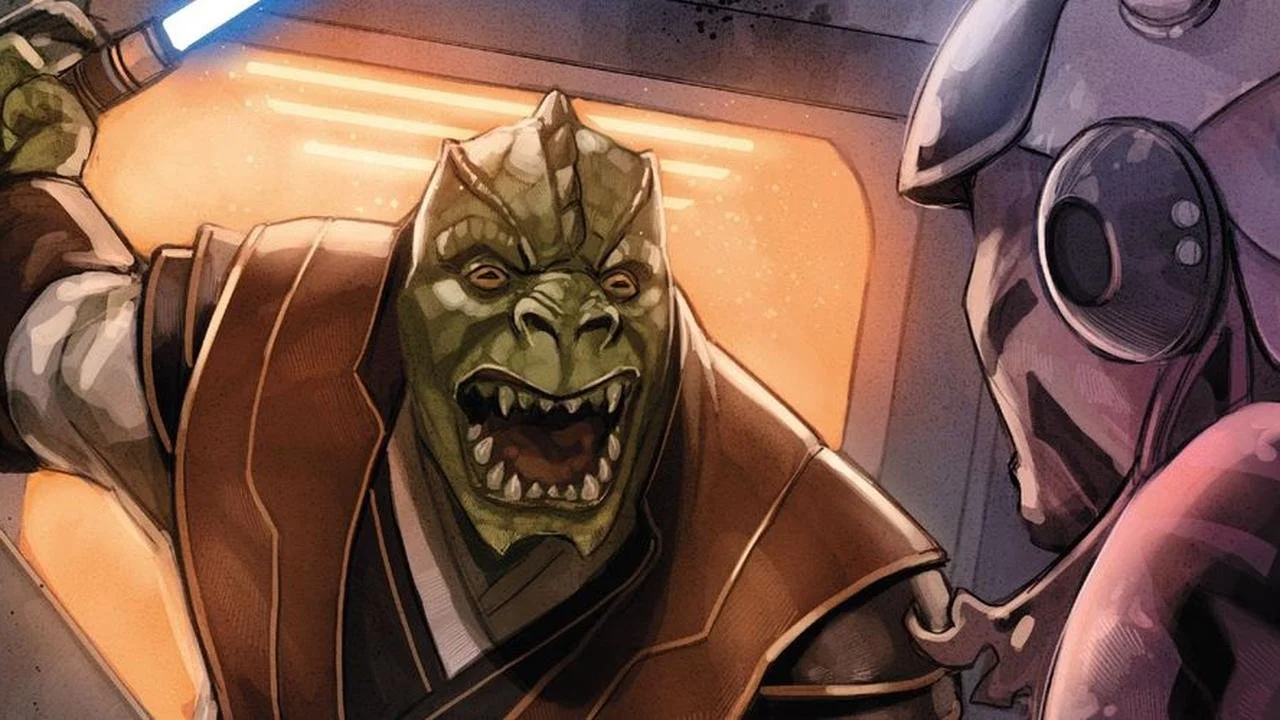Star Wars: The Insidious Disease Able To Destroy A Jedi's Link To The Force
The Force has gone through an interesting evolution since 1977. Originally described as "a mystical energy field," George Lucas attempted to ground the Force in the realm of Science Fiction with the introduction of midi-chlorians in Phantom Menace. This addition to the mythology had a mixed reception, but it has proven to be an interesting component in the stories since. Midi-chlorians have helped expand the science of Star Wars, specifically the biology of Force-sensitive beings. One of the most recent examples of this was introduced in the comic High Republic #12.
Jedi Master Sskeer was a Trandoshan member of the Order in the time of the High Republic whose ability to wield the Force was greatly impacted due to disease. Following the loss of his arm and close friend, Jora Malli, at the Battle of Kur, Sskeer struggled to connect to the Force. This led to moments of dark side influence, including bisecting a Nihil soldier and butchering the body when Sskeer lost himself to rage. However, it turned out that there was more at work in these moments than trauma. The very biology of Sskeer's brain was changed by an insidious disease called Magrak Syndrome.
RELATED: REPORT: Is 'Star Wars' Planning On Bringing 'The High Republic' To The Big Screen?
This syndrome has only been observed in Trandoshans, displaying symptoms similar to rabies with the afflicted "(giving) into...base urges. Aggression, fury, rage" to quote Sskeer himself. This quote is from a conversation with Sskeer's former Padawan, recently Knighted Keeve Trennis. Sskeer is seeking to explain his recent outbursts and his trouble connecting to the Force. Magrak Syndrome targets the Trandoshan brain, making them more aggressive and, in Sskeer's case, severing his connection to the Force.
While it still has yet to be confirmed, it can be speculated that Magrak Syndrome has a negative effect on the midi-chlorians, as they are the biological connection between a Jedi and the Force. Whether this separation from the Force is permanent for Sskeer remains to be seen, but it is interesting to see Lucas' ideas about the science of Star Wars influencing the most recent of Star Wars stories. Especially considering that Lucas' original ideas for a sequel trilogy involved exploring the micro-biotic worlds of midi-chlorians. Lucas was always a fan of exploring new ideas and trying new things in film-making. This was the driving force behind the special effects revolution of the original trilogy and some of the more bizarre arcs of Clone Wars, including stories about midi-chlorians.
The comic in which this disease is brought into cannon, High Republic #12, was written by veteran Star Wars storyteller Cavan Scott. The artistic team includes artist Georges Jeanty, colorist Carlos Lopex, inker Karl Story and letterer Ariana Maher. The High Republic multimedia project, also known as the Luminous project, continues to bring new components into the expansive Star Wars universe. It is quite the undertaking from Lucasfilm to forge their own era in the centuries before the Skywalker Saga. With several novels published, a slew of comic books in circulation, The Acolyte and the Eclipse video game all set in this era, the High Republic is rapidly establishing itself in the Star Wars universe. It will be interesting to see how the next phases of the project continue to round out the era and bring a fresh perspective on the golden age of the Jedi and the Republic, and the Star Wars lore as a whole.
READ NEXT: 'Kenobi' Star States Series Is 'Really Going To Satisfy Star Wars Fans'
Source(s): Screen Rant, Wookieepedia.com [1], [2]

